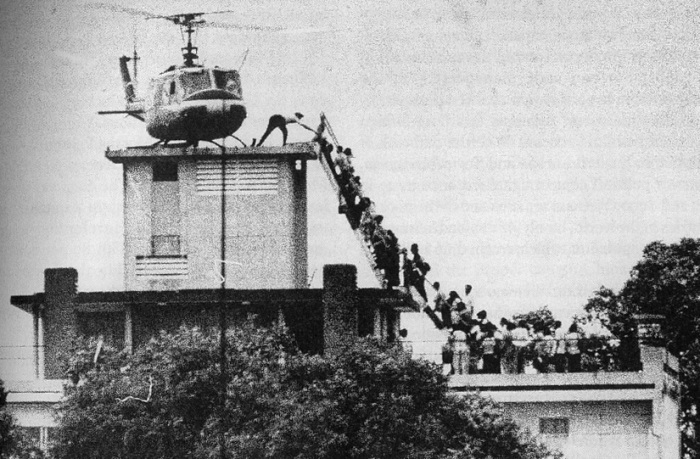After the Paris Peace Accords was signed, the end of Vietnam War was rather predictable. When the last U.S. combat troops were withdrawn from Vietnam on 29 March 1973, the Republic of Vietnam now had to depend purely on the strength of their Army of the Republic of Vietnam (ARVN), which was considered not capable of withstanding the advanced of People’s Army of Vietnam (PAVN), to survive.
North Vietnamese Advance
In early 1975, North Vietnam began their final offensive toward South Vietnam. American officers who still remained in Saigon and South Vietnamese civilians were highly concerned about the rapid advances of North Vietnamese forces. Many feared that a bloodbath would take place when the communist arrived like the Hue Massacre in 1968.
At the end of March, many Americans were leaving the city. In early April, the number of Americans evacuated increased speedily as the U.S. government was planning for a complete evacuation of American presence in South Vietnam. U.S. Ambassador, Graham Martin, preferred an orderly and quiet evacuation. But this plan was opposed by many in the Pentagon who wanted to evacuate as fast as possible.
Evacuation
On April 3, the Operation Babylift was launched to evacuate about 2000 orphans from Vietnam to United States and other countries (including France, Australia and Canada). The children were adopted by families around the world. Operation New Life was also launched that day. This operation was planned to evacuate about 110,000 refugees to United States. Operation Frequent Wind, occurred on the last days of Saigon, was the final evacuation of Americans and “at-risk” Vietnamese from South Vietnam. In this operation, more than 7,000 people were evacuated by helicopter – the largest helicopter evacuation in history.
Although thousands of people had been evacuated, there were still many South Vietnamese who wanted to leave the country. Those who couldn’t get evacuated by the United States had to manage to leave on their own. The cost for a passport and exit visa jumped sixfold while the seagoing vessels’ price tripled.
On April 9, PAVN forces approached Xuan Loc, a strategic city located 80km away from Saigon. On April 20, after a fierce fighting with the ARVN 18th Division, the PAVN finally captured Xuan Loc. Saigon now became their direct target. On April 21, President Thieu announced his tearful resignation on television. Vice President Tran Van Huong replaced him yet quickly handed over to General Duong Van Minh so as to find a peaceful solution with the communists. However, North Vietnam had no reason to negotiate. On April 27, Saigon was surrounded by 100,000 PAVN troops. On April 30, 1975, President Minh declared an unconditional surrender of his government.
Saigon had fallen on April 30, but a few South Vietnamese units still fought back in some places. By May 3, the PAVN finally controlled all of South Vietnam, and ended a twenty one-years war. After the final victory, North Vietnamese leaders quickly began to re-establish a new order in South Vietnam. However, many post-war programs such as “re-education” and economic reforms are widely considered as ruthless and failed policies.
Nowadays, the April 30, 1975 event is called by many different names. The Vietnamese Government celebrates it as Liberation Day or Reunification Day although Fall of Saigon is commonly used in Western accounts. Among overseas Vietnamese refugees, it is usually referred as the National Hatred Day or Black April. Despite whatever name it is called, the April 30, 1975 was regarded as a forgettable event in the minds of millions of people.
